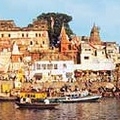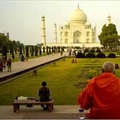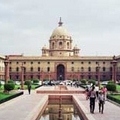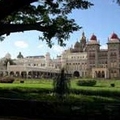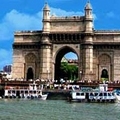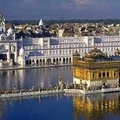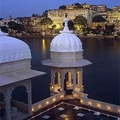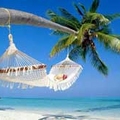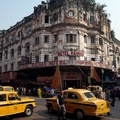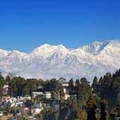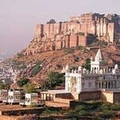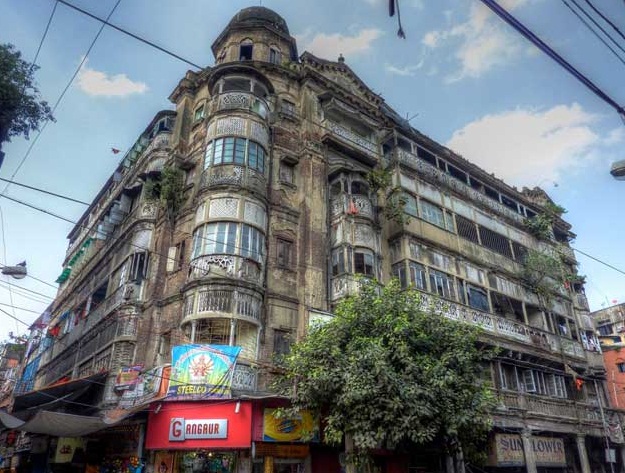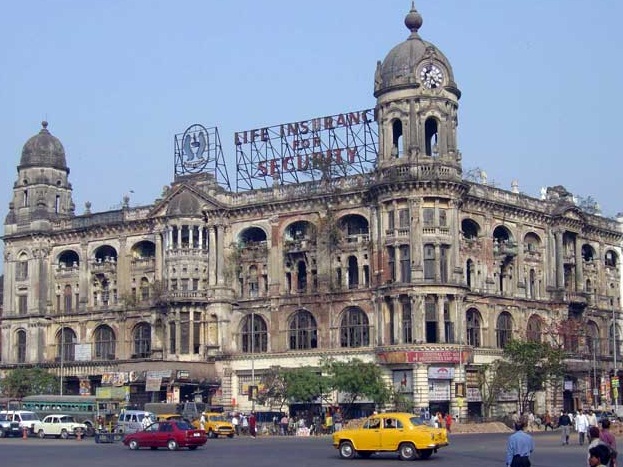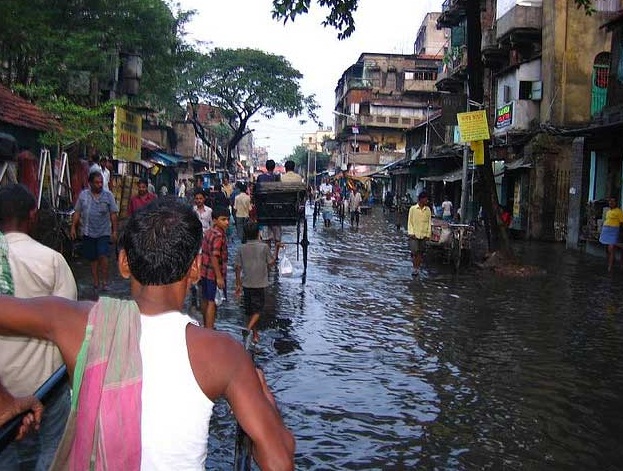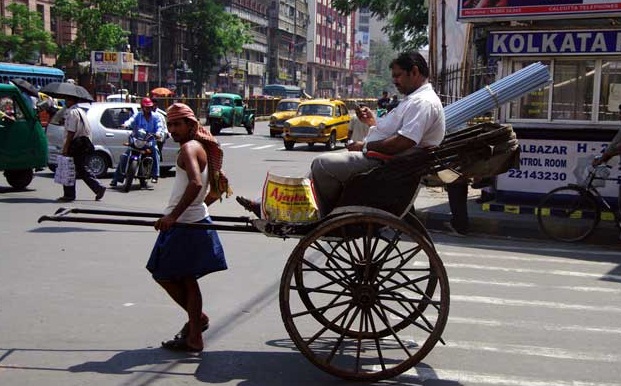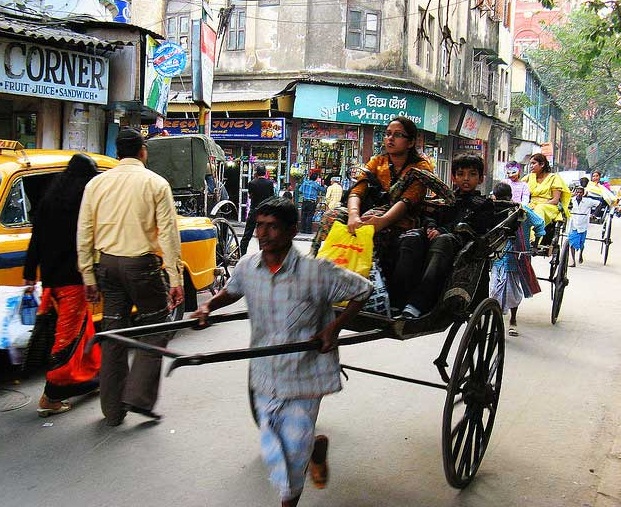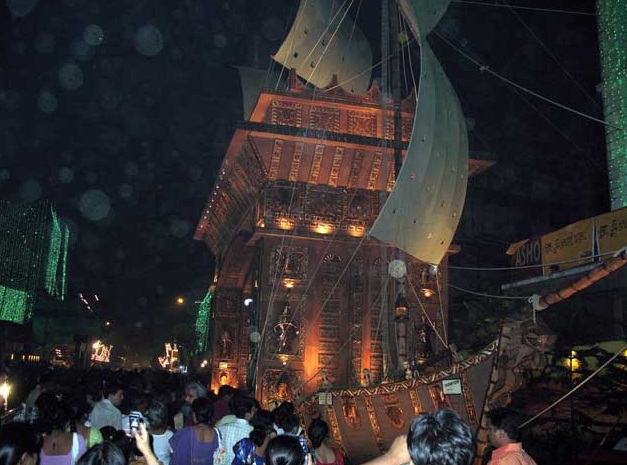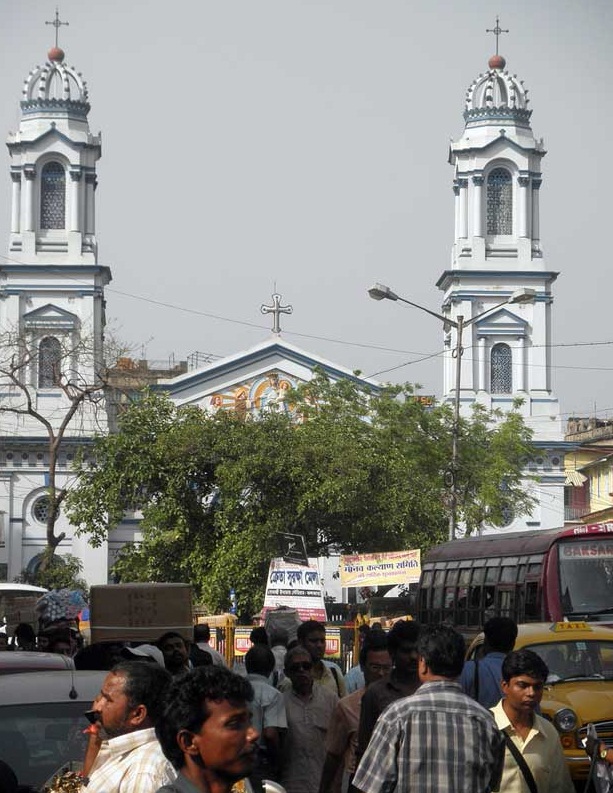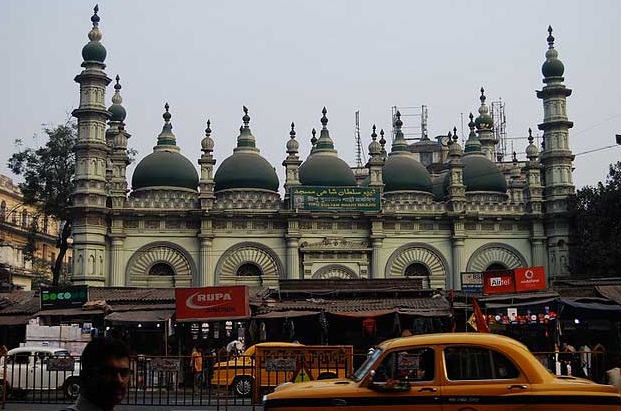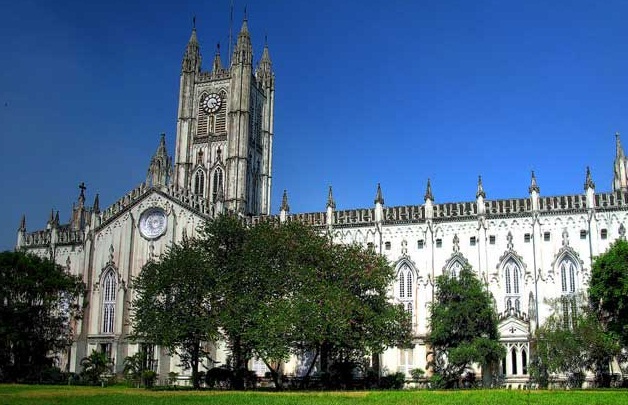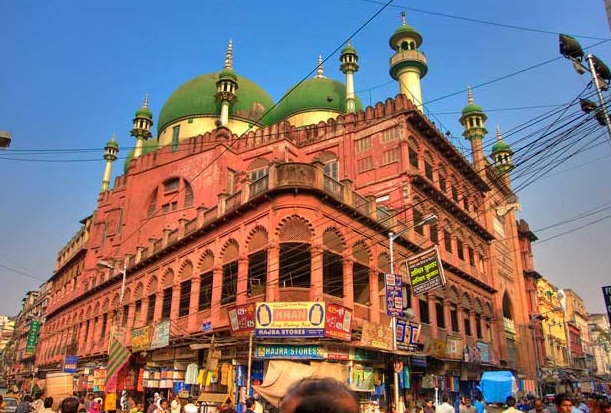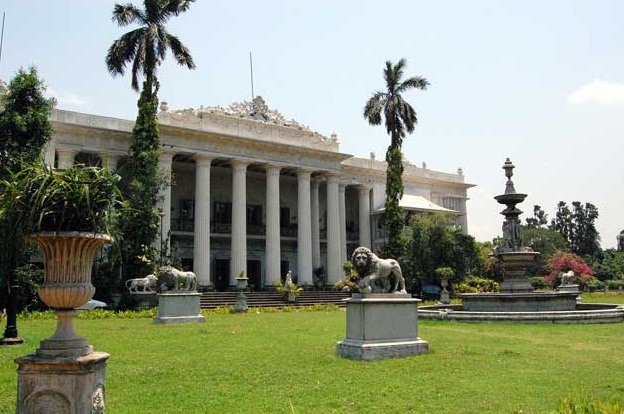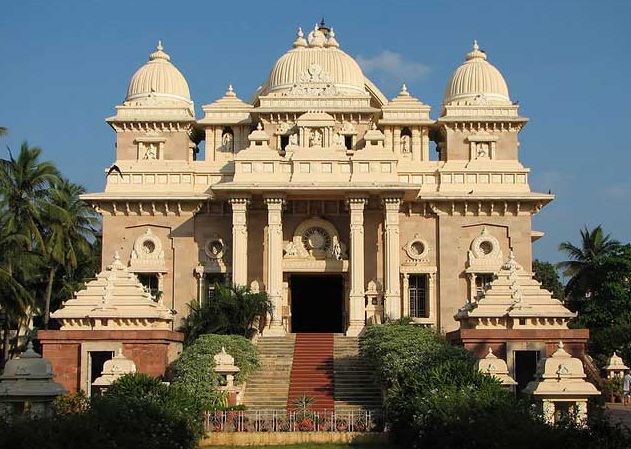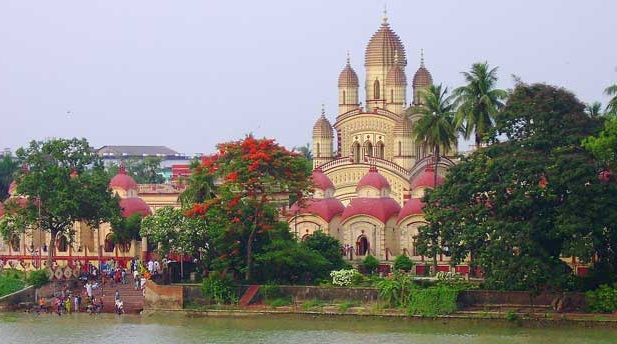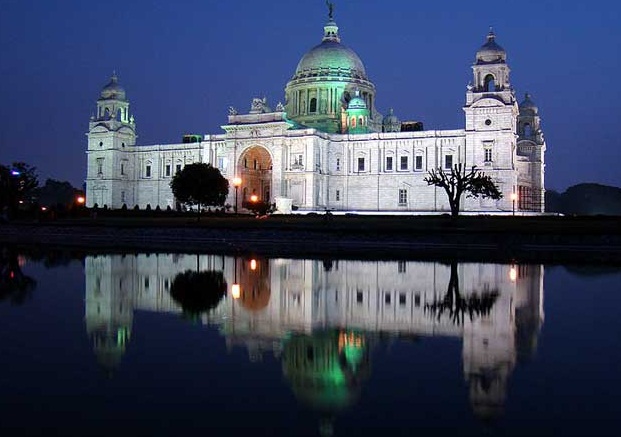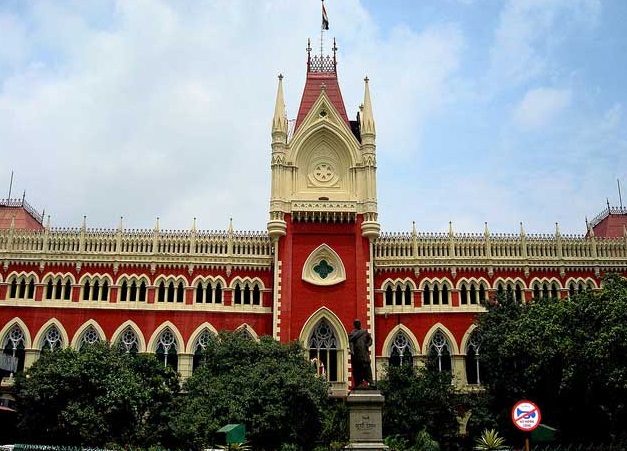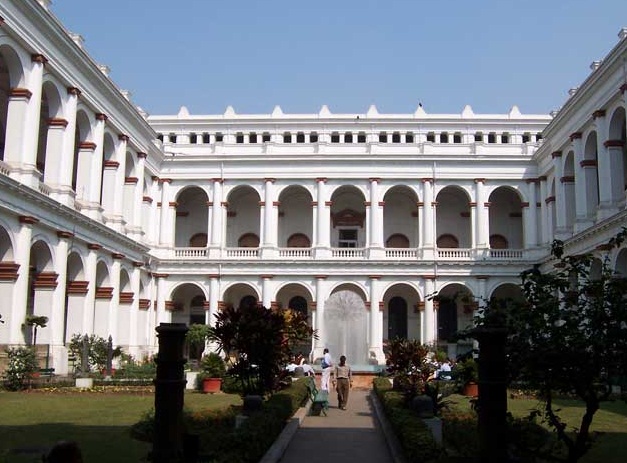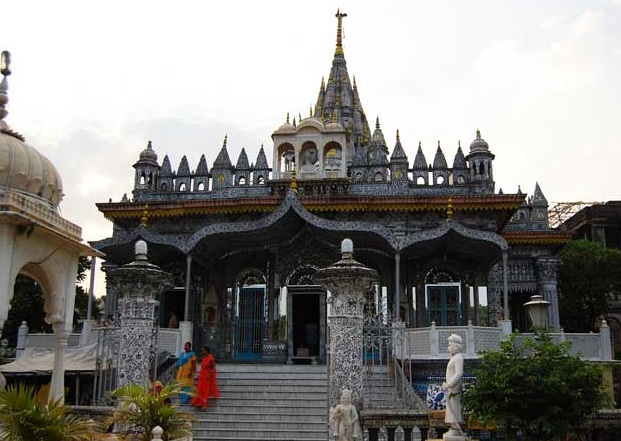Destinations / The Best Cities to Visit in India / Calcutta - A beautiful city of India
Calcutta - A beautiful city of India
Beautiful and squalid, cultural and vile, Calcutta belongs to the category of cities in India that fascinate and amaze at once. The intellectual and the cultural capital of India showed the world famous Indian poets, writers, producers and Nobel Prize winners. Dozens of places in the city are Bengali dance, poetry, art, music, film and theater. This third largest city in India has long been associated with images of human suffering to most Westerners. Extreme poverty is closely adjacent to the monuments of British colonial architecture, the vast majority of which are in poor condition. After losing the status of the political center of India in 1911, the painful division of the country in 1947, the flow of refugees from Indo-Pakistan War (1971), Calcutta has become synonymous with decadence and poverty. Having visited India, do not hesitate to include the possibility of Calcutta in the route of its travels. Experiencing disgust and admiration for the city on the river Hooghly you will never forget.
Calcutta: General Information
During the years of its history, Calcutta has acquired many names: The City of Palaces, The Black Hole, the British Empire Cemetery, The Pearl of the Orient. In 2001, Calcutta was named the new official name - Kolkata. In the story rarely happens that a city so badly abuses and denounces its famous visitors. The French anthropologist Claude Levi-Strauss once called Calcutta "the place of all that is hated in the world." The American film director Woody Allen said, "there are no 100 listed diseases." The winner of the Nobel Prize for Literature Vidiadhar Suradzhprasad Naipaul said: "I do not know another city which fate would be so hopeless." His German colleague, also a Nobel laureate Guenter Grass, having lived in the town for a few months, went even further and came up with the worst insult of all: "It's a lot of garbage thrown out by God." Even the former Prime Minister Rajiv Gandhi of India called Calcutta "a dying city" and wished that it had simply disappeared from the earth.
Calcutta was the first patron of Kali, one of the most revered deities in Hinduism. It is often depicted nude, with four arms and dark skin. Its face twisted grimace. Hypnotic and piercing third eye located on the forehead. It wears a necklace of heads of men. Believers know that the goddess of destruction should not be taken lightly. According to the Hindu legend, it is fearless in the face of death and consciously chose to die in the fire. Distraught by the loss of its wife, Shiva performed the dance of a horrible death and the earth trembled. In order to prevent irreparable, Vishnu threw a magic disc, Kali's body split into 52 pieces and fell to Earth. The little finger of his right foot touched down near the river Hooghly.
After some time at this place there was the city of Calcutta. Another patron was Maria Teresa of Calcutta. The Catholic nun from Albania arrived in Calcutta in the early 1930s and in 1948 founded a monastic community Sisters Missionaries of Love for the poor, the sick and the disabled. Its monastic congregation has moved beyond India and currently operates in 111 countries around the world, usually in poor areas and places of natural disasters. In 1979, Maria Teresa of Calcutta won the Nobel Peace Prize in 1997 Congressional Gold Medal, the highest award the United States. Six years after her death, saints were canonized. A few steps from the temple of Kali, there is a building, which continues to operate Mother Teresa founded the monastic congregation. The nuns are still care for the sick, poor and old people. Like Mumbai and Chennai, the city's history is closely intertwined with the colonial aspirations of the UK. When it was only the proud capital of British India, Calcutta recalls the era of British rule and a sense of abandonment at the time. Established as an important trade center of the East India Company on the banks of the river Hooghly in the late 17th century, it had grown to the largest shopping center in Asia, earning the name "Pearl of the Orient." Thanks to the magnificent Victorian buildings, ornamental lakes, lined with cobblestone footpaths, figured lamppost and parks, Kolkata was a totally European city in its architecture and feelings, becoming a favorite destination of British colonists. As the capital of British India, Calcutta flourished during the nineteenth century. It was founded the first modern Indian university in 1857, the city became a hotbed of Indian art and literature. But Calcutta was built in the marshy delta, high temperature, humidity, administrative disadvantageous position on the eastern outskirts of the state, the growth of national consciousness and the desire for independence Bengalis, finally convinced the British moved the capital to Delhi in 1911. Initially, the loss of status as a political center of India's low impact on the economic situation in Calcutta. But the division of a single state in India and Pakistan has had a devastating impact on the city. The number who left the Hindu population of West Pakistan in the Punjab, about equaled the migration of Muslim population of the Punjab in West Pakistan. Migration in West Bengal was almost always in one direction. Approximately four million Hindu refugees from East Bengal arrived in West Bengal, cluttering the already overpopulated Calcutta. There was a time when people were dying of starvation in the streets, forming the image of Calcutta as a symbol of extreme poverty. No sooner had the capital of the state recover from the first wave of migrants, as a second wave of refugees from Indo-Pakistani War of 1971. The situation is further aggravated when the ruling Communist Party of India State tried to abolish the feudal system of land tenure. Since that time, Kolkata earned reputation as the place unfit for living, becoming a city of appalling poverty and decrepit buildings packed with people. Since that time, when the British finally left India, Calcutta for a long time plunged into the realm of chaos and poverty, filth and neglect. Today, much of the architectural heritage of the city is in poor condition, the monumental colonial buildings practically restored. Moss and dirt covered once a beautiful Victorian house - decayed masonry, peeling paint and plaster, warped wooden windows are sun-clear evidence of indifference to the colonial legacy. Away from the main roads, drainage ditches are lined with debris. Dilapidated buildings in Calcutta and the chaos of the streets creates a frightening first impression on the visiting tourists. The third largest city in India (after Mumbai and Delhi ) is a vivid testimony to many social problems of the state. Kolkata has become an important center of the communist movement in India. The state of West Bengal, whose capital is Calcutta, was ruled by the Communist Party of India for 34 years (1977-2011) - the longest reign of a democratically elected communist government in the world. Mamata Banerjee, who won the election in 2011, put an end to 34 years of Communist rule in West Bengal. The board of communists reflected in street names and landmarks of Calcutta. Here, for example, there is a street of Lenin, Ho Chi Minh, Karl Marx and other famous revolutionaries, in the largest city park called the Square of Lenin's statue installed. India has nuclear weapons, sending satellites into space, while providing nearly half of its population with clean drinking water and electricity, more than 40 percent of the population is illiterate, one-fifth of people are undernourished. A country with a billion people, it seemed, forever doomed to lag behind because of the caste system and the apathy of its citizens. But since 1991, India has made tremendous strides in developing its economy through a program of economic reforms. In the new millennium, the growth rate of India account for nearly 8 percent per year and close to China. Exporting countries is soaring. The main engine of growth have now become computer technology, rather than the traditional cheap textiles. After China, India is the second locomotive of world economic development. The economy has overcome the long-term stagnation of Calcutta and also began to develop rapidly since the early 1990s and today is one of the fastest growing in the country. The IT sector is growing at a rate of 70% per year, twice the national average. It is noteworthy that the successful market reforms took place in the state, headed for over three decades of the communist government. Rickshaws are a popular mode of transport in Kolkata. In contrast to most major Indian cities, they do not have a bicycle attached to a cart. The owners of the rickshaws are using the power of their muscles and endurance of bare feet, to earn their daily bread. This work has little to do with globalization. Walking on rough asphalt, often barefoot, they earn a meager means heavy, but an honest living. Drivers deliver all types of rickshaws luggage to hotels, shops and homes throughout the city: live chickens, ripe bananas, food for the wedding. Most passenger rickshaws are middle class, the poor cannot afford such a pleasure, the rich prefer luxury cars. The communist government has long tried to cancel the "inhumane" working poor fellows, but the trade unions organized protests, fueled by fears of mass unemployment, brought to naught all the efforts. With little education or training, people involved in these debilitating labor, employment prospects are a little bit to another job. Many people come to Calcutta from Bihar, one of the poorest states in India. That their customers will do when the rickshaw will be removed permanently from the streets of the city?
Durga Puja
Durga Puja is the most important and solemn event in Calcutta. During the festival, the city installs more than two thousand pandals (temporary buildings), in which there are celebrations and gifts of the goddess Durga. The city is decorated with lights. People from across the country tend to visit Calcutta at this time, every night is a continuous carnival, which is attended by the residents of the city with their families, friends and strangers. Traffic stops, most people abandon their cars and walk on foot. They organize competitions for the most beautiful Pandal. Durga Puja in Kolkata is often called the Rio Carnival of Eastern Hemisphere. Usually, the festival takes place in October, but may fall in September or November, depending on the traditional calendar. The city-dwellers have always been great thinkers.
Kolkata boasts with the writer Rabindranath Tagore (the first winner of the Nobel Prize in Asia among non-Europeans), the great Indian filmmaker Satyajit Ray, another Nobel laureate in economics Amartya Sen (1998). As the former capital of India, it is the birthplace of modern Indian literature and art. For these reasons, it is often called the cultural and the literary capital of India. Calcutta has another hero Subhas Chandra Bose. Fighting against England during the World War II, Bose was one of the most prominent leaders of Indian independence movement and a legendary figure in contemporary India. The town has a museum-gallery with a rich collection of photographs depicting, including, a handshake Chandra Bose and Hitler in 1942. In the struggle against the British, Subhas Chandra Bose sought help wherever he could get it. Especially proud of the inhabitants of the city is Independence Square - a huge public park in the center of Calcutta, 3 km long and 1 km wide. For shutters on the beach there is Marina Beach in Chennai . Once Independence had many statues of the British governor-generals and other prominent personalities of the British Raj. After 1947, gradually, they were removed and their places were taken by well-known fighters for the independence of India and government officials. In honor of the centenary of the birth of Vladimir Lenin, the park has installed its statue. Residents of Kolkata are proud of their park. On its vast area there are several football stadiums, golf clubs, cricket grounds, race courses, Victoria Memorial, Fort William. The park is a popular holiday destination of citizens, political rallies and parades, washing clothes in ponds and grazing. In terms of weather, it is best to go to Calcutta in winter (November-February), when the maximum daytime temperature in the range of 27 ° C. Beginning in late June rains bring relief from the heat, but usually this time of year rains turn the streets into swamps and rivers.
Attractions
Victoria Memorial
The Memorial is dedicated to Victoria, Queen of Great Britain and Empress of India. The stone of the monument was laid in 1906 and the grand opening was held in 1921. Victoria Memorial is intended to serve as a testimony to the success of the British colonial rule in India. The money for the construction of the building was given by the Indian states, as well as the individuals who wished to receive certain preferences from the British government. The huge Victoria Memorial is located in the center of a vast park . A popular tourist attraction in Kolkata currently serves as a museum, which has a large collection of memorabilia related to Queen Victoria and the British presence in India, portraits and relics connected with the Indian independence.
Tipu Sultan Mosque
The Tipu Sultan Shahi Mosque is the most famous mosque in Calcutta. The building was built in 1832 by Prince Ghulam Mohammed, the youngest son of Tipu Sultan, known as "The Tiger of Mysore ". People of all spheres of life and religion can go to the mosque and be photographed next to the historic building.
St. Paul's Cathedral
The construction of the cathedral was completed in 1847. It pleases the eyes with beautiful architecture and wall painting. The interior walls are covered with floral patterns.
Supreme Court
The Supreme Court of Calcutta, High Court is the oldest in India. The Supreme Court building in the Gothic Revival style was built in 1872 along the lines of the House of clothiers Ypres, a large Gothic building of the 13th century in Ypres, Belgium.
The Marble Palace
The Marble Palace is one of the best preserved and most elegant buildings of the nineteenth century of Calcutta. The mansion is famous for its marble walls and floors, from where its name was. The entrance to the Marble Palace is free, but you must obtain permission from the Tourist Information Office in West Bengal.
Nakhoda Mosque
Nakhoda Mosque is the main mosque of Calcutta. Built in 1926, its design is reminiscent of the mausoleum of Mughal emperor Akbar in Agra.
The Portuguese Church
The Portuguese Church in Calcutta, dates since the 1799 year. It was built in a typical Catholic style, with beautifully decorated triangular gables and two turrets on the sides.
Belur Math
Belur Math is the location of the Company and the Ramakrishna Mission, founded by the prominent Indian philosopher Swami Vivekananda. The temple is notable for its architecture, which combines Hindu, Christian and Islamic traits as a symbol of unity of all religions. Jain temple complex The Jain Temple Complex of Calcutta is one of the most popular attractions. Built in 1867, the special beauty of the temple is attached to stained glass, colored stones and mirrors. The complex consists of four different churches and parks.
Indian Museum
The Indian Museum in Calcutta is the largest museum in India, whose exhibits include rare collections of antiques, weapons, jewelry, Mughal painting. Founded in 1814, it consists of six sections, separated by thirty-five galleries. This is one of the oldest museums in the world and the first of its kind in Asia.
The Temple of Kali
Kali is a Hindu temple at Dakshineswar near Calcutta. The temple was built in 1855. A significant part of life in it had Ramakrishna, the famous Hindu preacher, one of the most revered religious figures in India.
Write your Review on Calcutta - A beautiful city of India and become the best user of Bestourism.com
Others The Best Cities to Visit in India .
Maps of Calcutta - A beautiful city of India
map IndiaOthers from The Best Cities to Visit in India
You can stay at different hotels and chalets in India, which are available in abundance.
You can even opt for holiday rentals apartments which can be found in all towns.
There are various holiday villas in many cities to promote tourism.
Here, we present the top cities with landmark tourist spots as well.
Geographical position India is a country in South Asia.
India is the 7th place in the hierarchy of countries by area, second only to the number of inhabitants and democracy to most people.
Neighborhood India has a coastline with a length of seven thousand kilometers and the western border with Pakistan, Nepal, China, Bhutan and Bangladesh in the northeast and Mynmar in the east.
In the Indian Ocean, it is adjacent to Sri Lanka, Maldives and Indonesia.
The Relief India has three natural regions: the region of high mountains, Indo-Ganges Plain and the Deccan Plateau.
The region of high mountains in the north and northeast of the country comprises most of the Karakorum Mountains and part of the Himalaya Mountains.
High mountains covered with snow are persistent, there are many glaciers which are strongly fragmented by rivers.
Indo-Ganges is an alluvial plain, low and smooth.
The landscape is formed from the large Indian peninsular Deccan Plateau with sharp edges which are based on coastal plains.
The most important river of India is the Ganges.
Climate The climate of India is tropical monsoon with different shades, depending on the altitude and the available relief.
In the Northeast and in some areas protected from the wind very little precipitation falls on the Deccan Plateau, western slopes of Western Ghat region at the foot of Himalaya receive a large amount of precipitation.
Tourism Home of the Hindu civilization of the valley, the center of trade routes and vast empires, India has played a major role in the human history.
Brahmanism, Hinduism, Sikhism, Buddhism and janismul originated in India, while Islam and Christianity enjoy a rich tradition here.
Colonized as part of the British Empire in the nineteenth century, India gained independence in 1947 as a unified nation after sustained effort made in this direction.
Population, creatures,the geographical and climate system are among the most diverse in the world.
You may also remember that India is the home of pepper.

